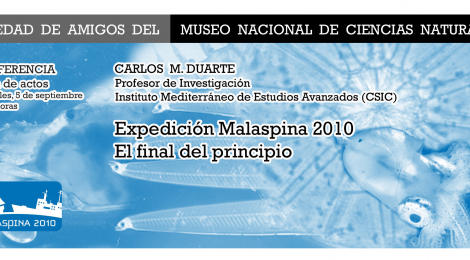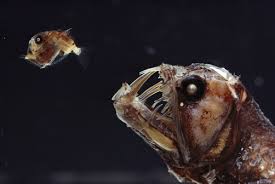
Ocean Fish Biomass Increases Thirty Fold In New Science Findings
For some few of us who study ocean pastures we have long recognized that studying both the phytoplankton (grass) of the ocean pastures and its grazers is a difficult task. Our methods have largely been the same for 100 years, mostly we use various sorts of plankton nets. Over the course of those past hundred years we have come to some generally common estimates as to how much of what is growing on these vast pastures.
With new multi-frequency biomass sonars being deployed the tools of the trade have dramatically improved. Now we know our estimates have been incredibly low and there is 30 times more life in the ocean than we thought.
Grazers on this grass of the ocean pastures includes a panoply of animal life ranging from tiny copepods up to larger krill and salps and the even larger critters who consume one and all. While the great whales may be the largest and flamboyant individuals, the most voluminous grazers in terms of biomass are the tiny mesopelagic fish, including the famous Hatchet Fish (which range in size from less than a centimeter to several centimeters in length).
Ocean science communities until days ago were accustomed to the common parlance that the amount of biomass in the tiny mesopelagic fish was very very large, surely the largest biomass of fish in the sea being they are so low on the food chain.
MAN O MAN WERE WE WRONG!
In a paper just out in the Journal Nature (Comm) scientists have revealed new estimates based on collected data to show what many had long suspected. These tiny fish which are naturally the desired dietary items of everything bigger than they were known to be able to evade capture by our crude towed nets and thus were under counted. Just how many were escaping collection is the big news and it turns out that the vast majority in fact escape capture.
Now we have solid evidence showing that our prior measurements of this most biomassive component of the ocean ecology has been woefully UNDERESTIMATED by more than a full order of magnitude. There are certainly 10 times more likely 30 times more than previously thought. Just consider the numbers before this important research estimates were that 1 billion tonnes of these tiny fish were to be found in the seas. Today we know they provide at least ten times that amount, indeed the authors suggest it is 30 times larger perhaps 30 billion tonnes of tiny mesopelagic fish biomass.
The commonly cited and politically (in)correct estimates of marine life being about equal to terrestrial life is now shown to be the profound non-sense it has always been, notion foisted upon the oceans by a terra-centric world. Toting up the combined biomass of humans and all other terrestrial animal life we find a commonly cited figure of about a billion tonnes, perhaps a 1.5 billion tonnes. Large marine fish and these tiny mesopelagic fish had been allowed to be commonly estimated at 2 billion tonnes. Today we know the biomass of the tiny mesopelagic fish is 30 billion tonnes alone, so 31 billion tonnes of total fish in the sea if you add their larger cousins a step or two up the food chain.
This tremendous correction in the biomass of this critically important fish stock requires a drastic alteration to oceanic carbon absorption and repositioning estimates. Instead of CO2 only sinking slowly from the surface, a staggeringly increased amount of fixed carbon is shown to be rapidly transported 500 and 700 metres below and released in the form of faeces into the deep ocean where it is sequestered for centuries to millenia. According to Xabier Irigoien, research leader, “Mesopelagic fish actively accelerate the flow for transporting organic material from the upper layers of the water column where the bulk of the organic carbon from the flow of sediment particles is lost.”
The role of fish in the biogeochemical cycles of ocean ecosystems and global ocean has to be reconsidered, as it is likely to be breathing between 1 per cent and 10 per cent of primary production in deep water, “said Mr Irigoien. The study posited that excretion of material from the surface may help explain unexplained microbial respiration recorded in deep oceans.
Mesopelagic fish clearly are a link between plankton and top predators, the paper added. Furthermore, the study stated that efficiency of energy transfer is surely much higher than experts previously thought. The report also showed the close relationship between primary large fish production and this newly quantified major source of ocean fish biomass.
So much for the good news of finding more tiny fishes. What my work is all about is the cataclysmic collapse of ocean pasture ecosystems. As the phytoplankton grass of the ocean pastures dies off so with that die off go these tiny fish. The historic measure of these tiny fishes and everything that feeds with them is surely down by a factor equivalent to the collapse of ocean plant life. The world’s oceans certainly have lost more than 20% ocean pasture plankton, the food at the bottom of the food chain, over the past 30 years or so. In much of the world’s oceans this decline has reached 50%.
What we also know is that by replenishing and restoring ocean pastures we can bring them back to historic levels of health and abundance and bring back the fish. It’s clear that billions of tonnes of fish will be restored to the oceans if we work to be the caring stewards of those ocean pastures. Read more about how the fish come back here.
Read more about this fantastic Spanish ocean science work at the Malaspina Expedition web site http://www.expedicionmalaspina.es/

